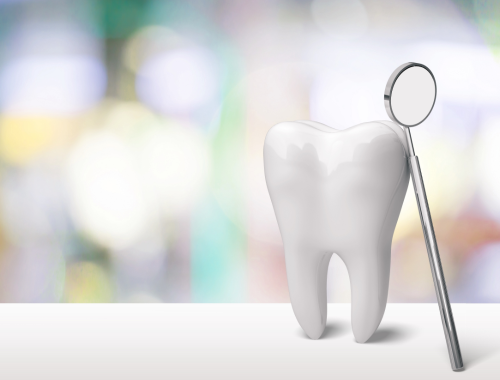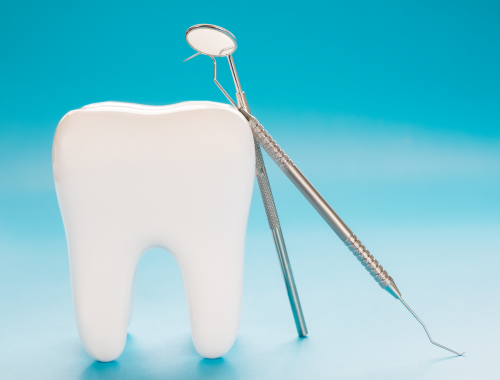Difference Between Big Tooth and Baby Tooth
The initial set of teeth to erupt in a child’s mouth are called baby teeth, and they act as temporary replacements for adult teeth until they erupt. Permanent teeth serve the vital activities of chewing and speaking and are bigger, stronger, and made to last until maturity. In order to maintain and care for your teeth properly, it’s crucial to understand the differences between these two types of teeth.

A big tooth
As a child ages, their primary teeth start to fall out, making place for their big teeth or permanent teeth. Big teeth or permanent teeth are frequently bigger and stronger than primary teeth. The incisors, canines, premolars, and molars make up the thirty-two big teeth or permanent teeth in total. An adult uses these teeth for speaking and chewing throughout their entire adult life.

A baby tooth
The initial set of teeth that generally erupt in a child’s mouth are known as baby teeth, primary teeth, or deciduous teeth. These teeth begin to appear in early childhood and are gradually replaced as a child gets older by permanent teeth.
Difference between a big tooth and a baby tooth
Definition
A big tooth
Big teeth or permanent teeth are frequently bigger and stronger than primary teeth. The incisors, canines, premolars, and molars make up the thirty-two big teeth or permanent teeth in total.
A baby tooth
The initial set of teeth that generally erupt in a child’s mouth are known as baby teeth, primary teeth, or deciduous teeth
Types
A big tooth
Permanent teeth are 32 in number. These include a set of incisors, molars. Premolars. Canines.
A baby tooth
4 first molars, 4 cuspids (also called canine teeth or eyeteeth), 4 four lateral incisors and 4 central incisors
Function
A big tooth
Biting, tearing, grinding and swallowing food.
A baby tooth
Baby teeth help children to chew food and speak. Also, the baby teeth save space for the kids’ future permanent teeth.
Summary
The points of difference between a baby tooth and a big tooth have been summarized as below:

FAQ:
How can you tell if a baby tooth is a big tooth?
Without comparing a baby tooth to other baby teeth, it can be difficult to tell if it is larger than typical. Here are some recommendations:
– Examine the baby tooth in relation to the nearby teeth. A tooth may be categorised as huge or little depending on how much larger or smaller it seems to be.
– The size of a baby tooth can alter as a child develops. In a young child, a large baby tooth may appear more proportionate with time, just as a smaller baby tooth may also appear more proportionate.
– Keep in mind that youngsters frequently have different tooth sizes, which is not always a sign of a dental issue.
What do baby teeth look like out of the mouth?
Typically, a baby’s teeth are whiter in comparison to an adult’s teeth. This is because the enamel (the hardest substance in the body that acts as the wear-resistant outside layer of the dental crown) coating is thinner, giving the teeth a whiter appearance. The teeth may appear yellow during the permanent stage, although this is typical.
What do baby teeth look like in the gum?
Baby teeth, or deciduous teeth, are smaller and whiter than adult teeth. They have a slightly different shape, with sharper edges and more pronounced cusps. Baby teeth may appear more translucent due to thinner enamel. They are usually very white, creating a contrast with the gum tissue. Baby teeth erupt in a specific order, starting with the lower central incisors, followed by the upper central incisors. Over time, other baby teeth appear until a child has a full set of 20 primary teeth. Baby teeth are spaced apart to allow room for adult teeth to develop. They naturally fall out, making way for permanent teeth. This transition is a normal part of dental development.
How are baby teeth identified?
Baby teeth, also called primary or deciduous teeth, can be identified using various methods:
Timing: Baby teeth emerge in a specific order and at predictable ages. Dental professionals and pediatricians use eruption charts to monitor tooth timing. For example, the lower central incisors usually appear first at 6 to 10 months old, while second molars typically emerge around 25 to 33 months old.
Tooth Shape and Size: Baby teeth are smaller and whiter compared to adult teeth. Baby molars have a flatter chewing surface.
Tooth Number and Location: Dental professionals identify baby teeth by their position in the mouth. Baby teeth include incisors, canines, and molars. There are 20 baby teeth in total.
Root Development: Baby teeth have smaller and less developed roots compared to permanent teeth. This is crucial for diagnosing dental issues and planning treatments.
X-rays: Dentists use X-rays to visualize baby teeth, providing information about tooth number, positioning, and development stage.
Clinical Examination: Dental professionals evaluate a child’s teeth through clinical examinations, assessing factors such as color, shape, size, decay, discoloration, and abnormalities.
Dental Records: Accurate dental records are crucial for monitoring tooth growth, condition, and treatments.
In summary, clinical examination, dental records, X-rays, and knowledge of dental development are used to identify and monitor baby teeth. This information is essential for monitoring a child’s oral health and addressing dental issues promptly.
Do big teeth push out baby teeth?
When the permanent tooth forms and starts to erupt, the roots of the baby tooth directly above it disintegrate. In order to make room for the adult teeth, the primary tooth will eventually become loose and fall out. Permanent teeth may not always erupt in the precise location that they should.
Is it normal to have baby teeth at 14?
Because not all kids grow and develop at the same rate, baby teeth (not permanent teeth) may occasionally last until the age of fourteen. However, a kid with a few baby teeth who is older than fourteen may experience an issue. One reason why baby teeth do not fall out is because permanent teeth do not erupt.
- Difference Between Global Warming and Greenhouse Effect - May 18, 2024
- Difference Between Vaccination and Immunization - March 3, 2024
- Difference Between Selective Mutism and Autism - February 25, 2024
Search DifferenceBetween.net :
Leave a Response
References :
[0]Backström, M. C., Aine, L., Mäki, R., Kuusela, A. L., Sievänen, H., Koivisto, A. M., ... & Mäki, M. (2000). Maturation of primary and permanent teeth in preterm infants. Archives of Disease in Childhood-Fetal and Neonatal Edition, 83(2), F104-F108.
[1]Da Silva Assuncao, L. R., Ferelle, A., Iwakura, M. L. H., & Cunha, R. F. (2009). Effects on permanent teeth after luxation injuries to the primary predecessors: a study in children assisted at an emergency service. Dental Traumatology, 25(2), 165-170.
[2]Parkin, N., Furness, S., Shah, A., Thind, B., Marshman, Z., Glenroy, G., ... & Benson, P. E. (2012). Extraction of primary (baby) teeth for unerupted palatally displaced permanent canine teeth in children. Cochrane Database of Systematic Reviews, (12).
[3]Shomurodov, K., Khaidarov, N., & Kamalova, M. (2021). The formation and eruption of baby teeth in children. Збірник наукових праць SCIENTIA.
[4]Image credit: https://www.canva.com/photos/MAFI4BNqp5E-big-tooth-and-dentist-mirror-in-dentist-clinic-on-background/
[5]Image credit: https://www.canva.com/photos/MADodYp0O7o-close-up-big-tooth-and-dentist-tool-/
